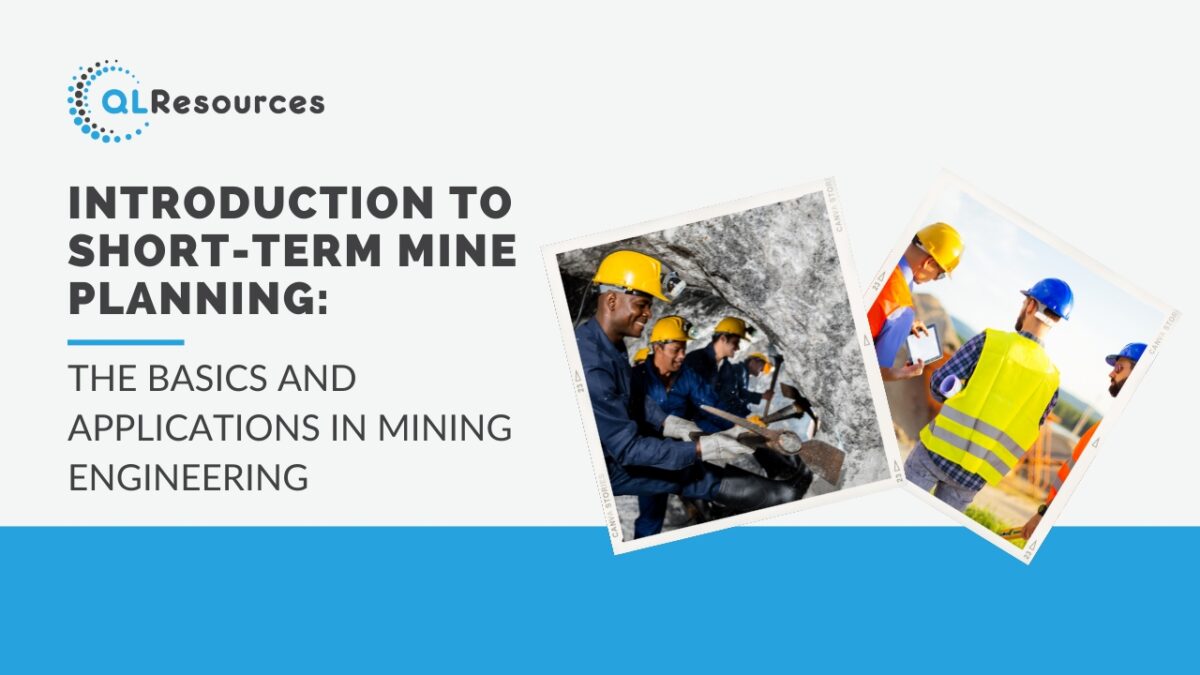Short-term mine planning plays a vital role in the field of mining engineering, contributing to the efficient extraction of valuable resources from the earth while ensuring operational safety and sustainability. This blog post serves as an introduction to the basics and applications of short-term mine planning, shedding light on the core principles, methodologies, and the significance of this crucial process in the mining industry.
1. Understanding Short-Term Mine Planning: 1.1 Overview and Objectives: Defining short-term mine planning and its primary goals in optimising resource extraction, ensuring safety, and meeting production targets. 1.2 Key Components: Exploring the fundamental elements of short-term mine planning, including geological data analysis, equipment utilisation, and production scheduling. 1.3 Importance of Collaboration: Highlighting the necessity of effective communication and collaboration between mining engineers, geologists, and operations teams for successful mine planning.
2. Methodologies and Approaches: 2.1 Geological Data Analysis: Discussing the role of geological data in short-term mine planning and its impact on resource estimation, grade control, and mine design. 2.2 Mine Optimisation Techniques: Exploring methodologies and software tools used in optimising mine layouts, production sequencing, and material flow to maximise operational efficiency. 2.3 Equipment Utilisation and Scheduling: Examining strategies for effective utilisation of mining equipment and optimising production schedules to meet targeted production volumes.
3. Applications in Mining Engineering: 3.1 Extraction Sequencing: Illustrating how short-term mine planning determines the order and sequence of resource extraction to minimise waste and maximise resource recovery. 3.2 Risk Assessment and Mitigation: Highlighting the importance of risk assessment in short-term mine planning, including geotechnical hazards, safety considerations, and environmental impacts. 3.3 Operational Efficiency: Exploring how short-term mine planning enhances operational efficiency by optimising production schedules, minimising downtime, and reducing operational costs. 3.4 Compliance and Safety: Discussing how mine planning ensures adherence to regulatory requirements, mine safety standards, and environmental regulations.
4. Challenges and Future Considerations: 4.1 Uncertainty and Variability: Addressing the challenges posed by uncertain market conditions, fluctuating resource grades, and geological uncertainties in short-term mine planning. 4.2 Technological Advancements: Discussing the impact of emerging technologies such as automation, digitalisation, and artificial intelligence on the future of short-term mine planning. 4.3 Sustainable Mining Practices: Exploring the growing focus on sustainable mining practices and how short-term mine planning can contribute to minimising environmental impacts and promoting responsible resource extraction.
Conclusion: Short-term mine planning serves as the foundation for efficient and sustainable resource extraction in mining operations. By employing sound methodologies, analysing geological data, optimising production schedules, and ensuring compliance with safety regulations, mining engineers can effectively maximise resource recovery, mitigate risks, and enhance operational efficiency. As the mining industry continues to evolve, embracing advancements in technology and sustainable practices will be crucial for the future of short-term mine planning, ultimately leading to a more responsible and efficient approach to resource extraction.
Join our community and never miss an update! Subscribe to our newsletter and blog to stay up-to-date on the latest trends, tips, and insights in your area of interest. Don’t miss out on exclusive content and promotions. Sign up now and be a part of our growing community!
